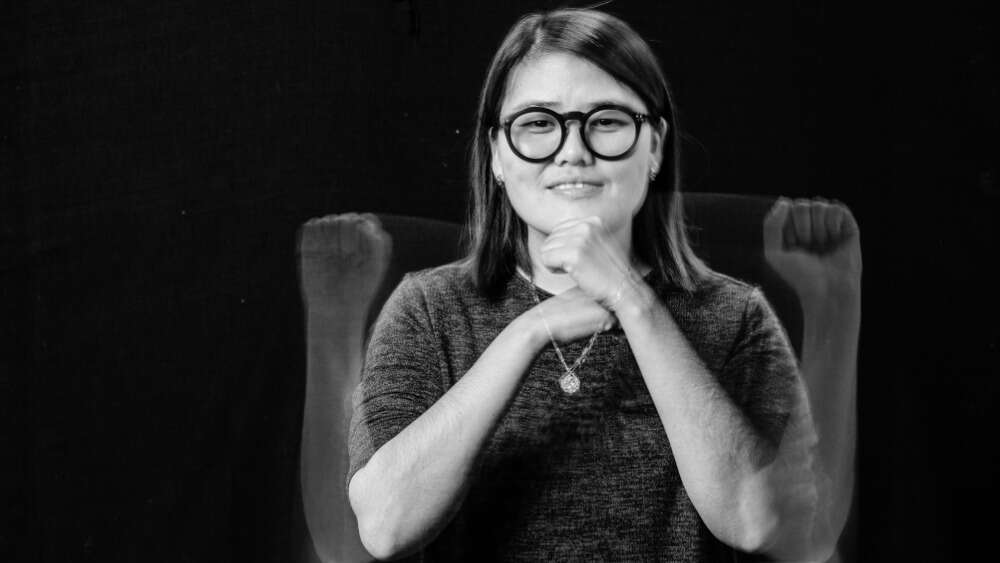Today, 23 September, is International Day of Sign Languages – a day the United Nations has proclaimed to raise awareness of the importance of sign language in the full realisation of the human rights of people who are deaf. For Christians, an important aspect of this goal is sign language Bible translation.
Eternity has often reported on the ongoing Auslan Bible translation work that Bible Society Australia is a partner to – with a long-serving and devoted team. Auslan is one of the world’s estimated 400 sign languages and is predominantly used in Australia.
But there is also exciting work taking place in other parts of the world. For example, last year, the USA Deaf community celebrated completing the American Sign Language Bible.
American Sign Language is used by the 408,000-person Deaf community in the United States. And as of last year, it is the only sign language in the world to have the full Bible translated.
“After many years of being misunderstood, there is now new energy and urgency behind the task of opening up the Bible for over 400 sign languages” – Chris Dale
“The completion last year of the very first Bible in a sign language – American Sign Language – after nearly four decades of work was a great encouragement to sign language translators and Deaf communities in other countries,” says United Bible Societies Deaf Ministry Coordinator Chris Dale.
The American Sign Language Bible was translated by Deaf Missions with the support of various partner agencies, including American Bible Society, with a dedication service held online due to COVID-19 restrictions.
Used by a massive 2.1 million Deaf people, another 16 sign languages also received first or additional Scripture portions in 2020.
“After many years of being misunderstood, there is now new energy and urgency behind the task of opening up the Bible for over 400 sign languages,” Dale said.
“Despite serious challenges caused by the pandemic, Deaf translators found new ways to co-operate, supported by the very timely development of new software tools, which allowed them to make progress,” said Dale.
In the Asia Pacific region, a network of Bible Societies, other Bible translation agencies and local partners are also working together to make the Bible accessible to deaf people.
Bible Societies in Thailand, Vietnam, Mongolia, Sri Lanka and India already have sign language Bible translation projects underway.
In Japan, Indonesia, the Philippines and Nepal, Bible Societies are partnering with local deaf groups who have initiated sign language Bible translation projects, supporting that work, sometimes with other Bible translation agencies also involved.
Other Bible translation agencies have sign language translation projects underway in Korea, Myanmar, Malaysisa, Taiwan, Hong Kong and India.
“Deaf people look at the text in such a different, refreshing way” – Marlon Winedt, Global Translation Consultant
Interestingly, it is not only the deaf who benefit from sign language Bible translations, according to United Bible Societies Global Translation Consultant Marlon Winedt.
In thirty years of Bible translation work, Marlon has overseen the translation projects over 18 different languages. He has also earned a PhD in theology/Bible translation, and a postgraduate qualification in Bible translation, as well as a postgraduate degree in linguistics.
Marlon is proficient in Papiamentu (the Afro-Portuguese Creole tongue of his island homeland Curaçao), German, French, Spanish, English, Dutch and some other Creole languages. He knows the biblical languages – Hebrew, Greek, Aramaic.
Yet, Marlon told Eternity that, as a hearing person, being involved in sign language Bible translation has forced him to analyse the text in exciting, new ways.
“They [people who are deaf] have a very keen sense of features in the Bible – that’s very visual … They look at the text in such a different, refreshing way,” he said.
He gave the example of translating a passage that includes “Jesus said,” explaining that Deaf translators had asked Marlon to “fill it in”, in terms of Jesus’ facial expression.
“So how did Jesus say it? Did he say it angry? Neutrally? Is there such a thing as neutral? Did he say it happily?” Marlon said. “So actually, they are forcing you to, as a reading person and hearing person, to search through the text to find out – in the biblical language and in the context – how Jesus said it.”
“Of course, when Jesus said it, he had a facial expression, but we don’t know what it was! Sometimes we can find out, sometimes we can’t and it’s up to the translator to decide what in the context fits. Sometimes you just don’t know.”
Marlon said he found these and other questions asked by deaf translators to be “been a very revolutionary way of looking at the Bible”.
Email This Story
Why not send this to a friend?


